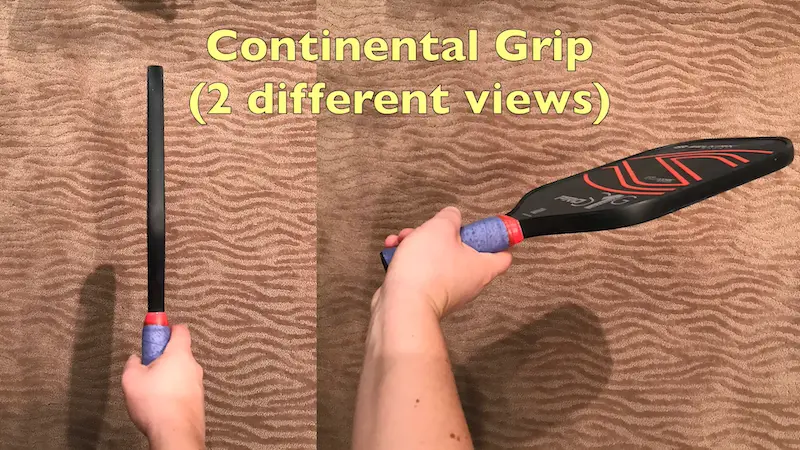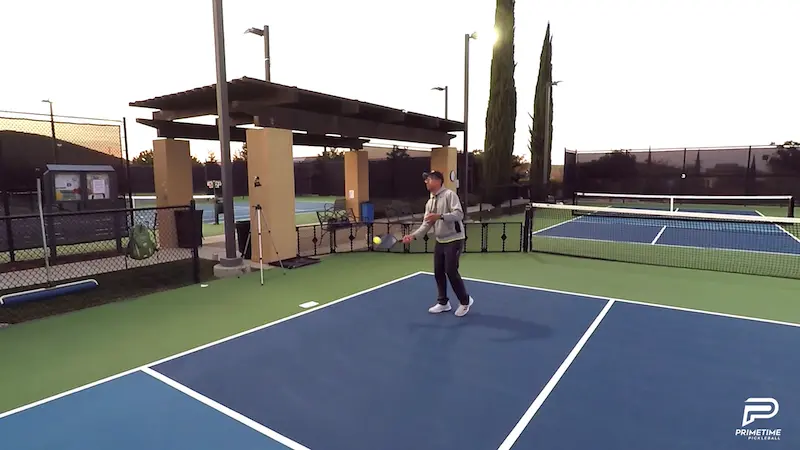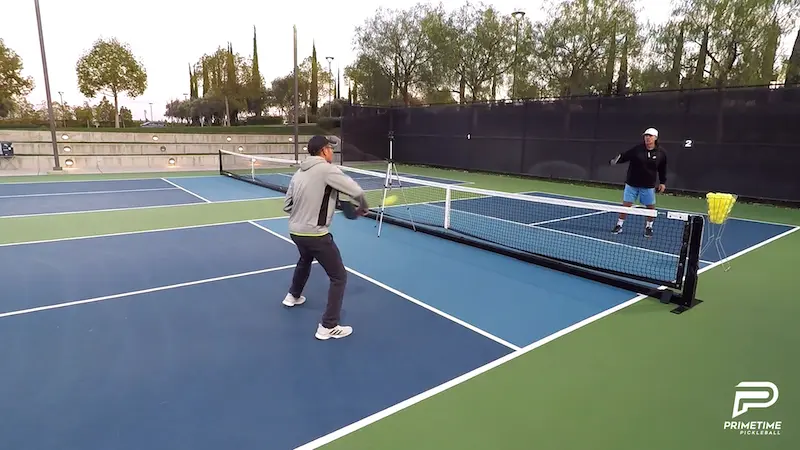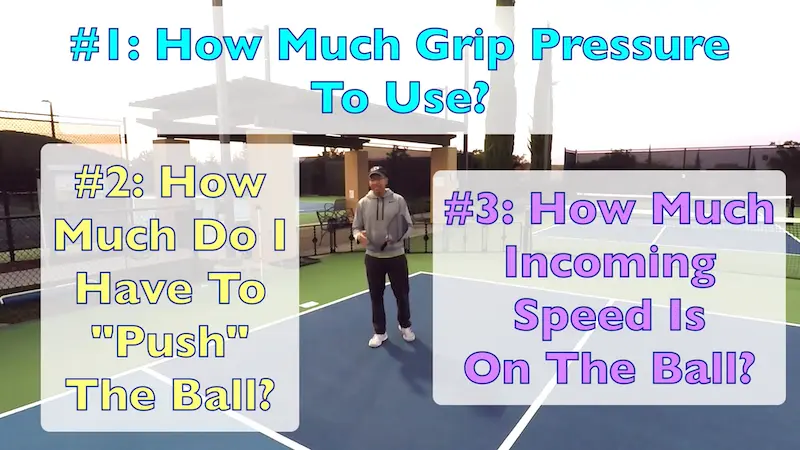In today’s blog we’re going to go over the three most important key factors when it comes to reset volleys and how to adjust them based on your distance from the net.
Let’s say you are making your way up through the transitional area from the baseline to the non-volley zone. Or, maybe you’ve gotten pushed back off the non-volley zone line and you’re playing some deep defense.
In these situations, you might hit a volley that you’re going to hit it in the air trying to neutralize the ball.
Your opponents at the non-volley zone are hitting an attacking offensive shot. You’re just trying to reset it into their kitchen so then you and your partner could come back up again and regain that neutral ground.
There’s three things that affect hitting this type of ball and it really has to do on how far you are from the net.
The first factor is grip pressure. The second factor is going to be how much you actually push the ball, how much work you put into pushing and helping the ball get over the net. Finally, the third factor is going to be how fast that ball is coming to you, the pace of the ball.
Let’s go over all three factors.
To start off we’re using a continental grip so that we can hit a forehand or backhand volley and have our contact point be out in front of us like with any good volley.

You also want to make sure that your paddle face is open. Especially when you’re hitting a reset volley from the transitional area.
You really want that ball to go over the net and you can’t do that unless your paddle face is open.
Factor #1 – How Much Grip Pressure To Use?
First, we will talk about grip pressure.
Depending on how far you are from the net, let’s say if you’re only a foot to three feet off the non-volley zone, your grip pressure is going to be pretty loose because you’re probably going to have to take more pace off of that ball.
Your grip pressure should probably be between a three and a five. It’s pretty loose. Actually, if you loosen it a little bit more you can see the ball actually drops shorter into the kitchen.
The further you get from the net you might have to tighten up your grip pressure a little bit more. Let’s say between a six and eight depending how how far back you are from the net.

This is why adjusting your grip pressure is really important.
Adjust your grip pressure to be loser as you are closer to the net and then if you are farther you’re going to tighten it up a little bit more so that ball will go a little further.
Factor #2 – How Much Do I Have to “Push” The Ball?
The second tip is going to be how much you actually push the ball and this will also depend on how far you are from the net.
The closer you are to the net the less work and paddle movement you will need. You’re just going to push it a little bit or actually just keep your paddle still.

When you’re closer up to the non-volley zone you actually won’t be moving your paddle very much. You’ll just kind of stick it out in front of you making sure it’s stable.
As you move further back, in and around the transition zone, you might have to give the ball a little bit more of a push.
Depending on where you are on the court you will adjust your pushing accordingly in order to get the ball over the net.
Another thing you want to pay attention to is your stance. You should be really low to the ground.
Factor #3 – How Much Incoming Speed Is On The Ball?
The third and final factor that you’re going to have to adjust when you’re trying to hit this reset volley into the kitchen is the ball pace, the speed of the ball.
Obviously the faster your opponent is hitting at you you’re going to adjust your grip pressure. You’re actually going to have to loosen it a little bit. And, you’ll have to push less.
The slower your opponent hits at you, you might have to help that ball over because if you just keep your paddle there with no movement then the ball might not make it over.
Let’s describe some practice scenarios:
Your opponent will keep hitting at you and then you’ll just try to keep blocking from a few feet behind the non-volley zone line and then you’ll move back and then your opponent will give you different speeds (faster or slower). You’ll try to adjust accordingly.
The low balls are tough but do the same thing: stable paddle out in front and you’re adjusting grip pressure as well as how much you push that ball.

Even further back, when you’re in the transition zone, you do the same thing as mentioned above. Keep adjusting.
When the ball is a bit slow you kind of have to give it a little bit of a push.
During your drill/practice keep mixing it up with your opponent.
These are the three things that you’re going to have to adjust and keep in mind when you’re at different distances from the net.
Hopefully this blog helps you out and you can stay in the point by neutralizing that ball so you can win more matches.